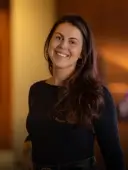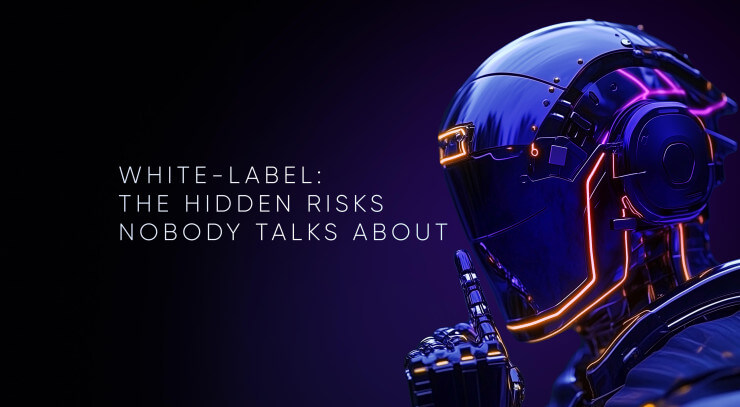Finance has always been quite conservative but it hasn’t missed out on technological progress. Now banks are separating from their customers due technological progress. According to the research, 40% of American bank customers don’t visit banking offices for six months or more. The number of local bank branches decreased by almost 50% between 1995 and 2015. Transactions are rapidly moving onto the web as more and more financial services are provided online. Digital channels are already dominating and bank innovation is the only way to survive.
Innovations in the Banking Industry Should be Evaluated from Users Perspective
Innovations in the banking industry refer to the introduction of new ideas and technologies that aim to improve the efficiency and effectiveness of banking services. This can include a wide range of activities, such as the development of new financial products and services, the use of emerging technologies like artificial intelligence and blockchain, and the implementation of new business models and operating processes. The goal of banking innovations is typically to increase customer satisfaction, reduce costs, and improve the overall competitiveness of the bank.
The talks on such innovations in the banking industry as chatbots, blockchain, open banking, artificial intelligence, and machine learning are going around in the business world and media-supported analysts often highlight their advantages. We even created a UX/UI design concept of the banking Super App based on 10 trendy technologies.
It is obvious that innovations in the banking industry could bring:
Increased efficiency
Innovations in the banking industry can help streamline processes, reduce costs, and increase the speed at which transactions are processed. This can result in a more efficient banking system overall.
Improved customer experience
New technologies and services can make it easier for customers to access banking services and manage their financial affairs. For example, the widespread adoption of mobile banking apps has made it possible for people to check their accounts, pay bills, and transfer money from anywhere, at any time.
Greater competition
Innovation can help banks differentiate themselves from their competitors and offer unique value to their customers. This can help banks stay ahead in a highly competitive industry.
New revenue streams
The introduction of new products and services can open up new sources of revenue for banks. For example, a bank that offers financial planning services or wealth management services in addition to traditional banking services can generate additional income streams.
Better risk management
New technologies, such as artificial intelligence and machine learning, can help banks better assess and manage risks, such as credit and fraud risks. This can help banks make more informed decisions and reduce their overall risk profile.
However, the global obsession with new technologies often veils a clear vision of innovations pros and cons in the banking industry. Obviously, digitalization cannot be stopped, but at some point it’s better to proceed with caution. Let’s discuss trend technologies, the implementation of which is particularly important as far as customers’ experiences are concerned.
1. Blockchain and chatbots: is it harmful to customers
The main goal of every banking innovation idea is to make a user’s life simpler. Only in this case, the innovations in banking industry will be successful. It is important not to listen to the hype and to take an unbiased look at the benefits of the new technology.
For instance, the advantages for banks from the blockchain implementation are the buzzword. Analysts publish reports stating dozens percents of savings by reducing infrastructure costs, improving data quality, and transaction transparency. According to consulting firms banks’ savings from blockchain range from $8-12 billion up to $20 billion a year.
With this in mind, banks are considering implementing this innovative technology. But first, it’s better not to take immediate profits but the customers’ interests. If such innovations in the banking industry aren’t convenient for customers, then they won’t be used and thus won’t bring any profit. This approach allows us to look at the blockchain in perspective. So, besides enthusiastic feedback, it’s vital to fully understand the technology and consider its disadvantages. Did you know that the entire bitcoin network can only handle about 7 transactions per second? In comparison, the Visa payment system can handle up to 24 thousand transactions per second.
Users demand instant transactions, and this low speed won’t keep up with such Fintech innovation. It means that this technology is not yet ready for mass application in large banks. In the future of banking industry development of the blockchain technology should correspond to the users’ expectations from online banking.
Here is another example. According to the latest estimations, the use of chatbots for customer support allows a saving of up to $0.7 per interaction. Therefore, some experts propose to design conversational banking solutions fully based on the chatbot technology. But bear in mind, that the majority of customers are now used to a graphical interface, and as a result, some of them (such as senior citizens, word blinds, non-tech-savvy users) cannot use the chat. They need appropriate communication channels.
No need to bet on the predictions of a particular innovative technology dominance and make financial services’ strategies basing on them. The first priority is the customer, his comfort, habits, and needs. The smart use of innovative banking technologies in the right context will help to enrich the user experience in a profound way.
From this point of view, banking AI driven chatbots are a great solution for banking services via social networks and messengers. In its turn, the blockchain already helps to effectively conduct complex transactions through “smart-contracts”. New technologies are integrated by making a real benefit for real people.
2. Open Banking: the death of banks or the dawn of client-centricity
Businesses try to improve their efficiency, but even the most advanced technologies have their “dark side”. For example, Open Banking is frequently talked about and the countries of the European Union have started to adopt it at the legislative level. According to the Revised Payment Services Directive (PSD2), all banks in Europe have to launch the API to their services for third-party market players, starting from January 2018.
The goal is to make the access of licensed financial services to customers’ financial data easier (with user’s consent, of course). This initiative is a true revolution which will completely disrupt the banking industry. Future of open banking will lead to the creation of new and more convenient financial services. For example - marketplaces, where the customers will be able to pay for the services of different banks, insurance companies and other businesses.
At first glance, everything seems fine. On the one hand, banks will be able to get new customers and they even won't need to finance their acquisition. This task will belong to the Fintech start-ups using the banking API. On the other hand, customers will be less dependent on a specific bank and potentially unaware of whose services they are currently using. In the end, it may be as easy to change the bank as the financial product — just a couple of clicks on the same marketplace.
This does not mean that the API launch will eliminate banks in the future. Open Banking is a logical step in the development of a digital society, and it has obvious benefits, such as allowing banks to go beyond the usual geography and increase their number of customers and list of innovative financial products.
But banks should pay more attention to the user’s interface interaction. The conditions of the Open Banking’s highly competitive market will transform the users’ interface into the vital factor in determining the success of financial services and Fintech firms are already quite experienced in it.
Banks should reconsider their role in terms of the customer-centered digital banking future, and move from the pattern of “branches network” to an “open technology platform”. Then, they can focus on creating a value for final users by collaboration with Fintech companies.
3. FinTech success: what if this is just an illusion
FinTech startups are the main translators of new ideas in the global financial market. But before praising just another popular project, it is worth remembering how financial innovations are actually arranged.
Unfortunately, nobody knows about the initial effectiveness of an innovation. FinTech startups are forced to use every opportunity to attract attention, because the investments and the number of interested users depend on it. Therefore, the popularity of the technology of the specific project may outweigh its potential for creating a profitable business.
In local markets, the innovative financial products and services of some FinTech startups look successful and show inspiring tractions. But a startup is not a bank with millions of customers and government regulations. The model, that works on a small number of clients with no restrictions imposed by regulations, could prove to be detrimental when scaling up to a high level.
In any case, a FinTech startup should provide its rich customers with financial protection and security on a certain stage of growth. So, it will become the object of state regulation and hence be licensed. This, in turn, imposes certain legal requirements on business processes and interaction with the customers which often deprive the startup of its facilities (which have been chosen by customers).
Therefore, during the integration of the next "hot" technology by the teams of FinTech startups, banks should be very careful when answering the questions: "How will this work on our scale?", "What benefit will it bring to our customers?" or "What difficulties may arise?".
4. AI super-personalisation: how to enhance customer experience
Today, the level of financial services development doesn’t let the final user see a significant difference between them. This means that a dramatic improvement of its market position via some minor improvements of the same services may not be a long-term strategy. The services’ market is moving towards super-personalisation of the customer experience. This lead to the development of digital technologies such as Big Data, Predictive Analytics, Artificial Intelligence, and Machine Learning in banking.
For example, by using these tools it’s possible to conduct instant scoring and automatically respond to a loan application, or to even offer it at a favorable moment. It’s also possible to offer services and products basing on a specific customer spendings - for instance, a card with advantageous conditions for frequent travellers, when shopping internationally. Moreover, insurance is automatically offered for the customer who has just bought a car. This use of new technologies will enrich the customer’s experience and raise banking services to a new level.
Today, we can already see the implementation of personalised context advertising and “cookie-based” search experiences. Technological giants are a great reference for inspiration in this area. The number of areas offering a personalised experience will grow rapidly. Don't miss this train.
5. Digital interface: stop confuse customers
In a modern world, the most important thing for users is the convenience. This is why food delivery services are so popular. Many people are willing to pay more for food just not to cook themselves.
The financial sector is no exception. Even the most advanced and innovative banking product won’t be used, if it is inconvenient. In terms of tough digital competition, it is not enough just to implement trending technologies like chatbots, blockchain, or artificial intelligence. Innovative financial products need to make the customer receive the best experience. That’s why a thoughtful functionality must be offered through usable and appealing interfaces based on key user scenarios.
There’s no need to make a customer fill in a registration form if his data can be verified through the API from the provider where he once registered. Why bother the user with things that can be automated?
Ideally, all the complexities should be covered by the service, and the interface should be easy, intuitive, and frictionless. These are the main directions for the use of advanced technology combined with Design Thinking and User Experience design.
Conclusion
It goes without saying, but innovations in the banking industry are only good if used in an appropriate way. There is no need to implement something new just because of the hype and "because everyone is doing it". It’s better analyze the pros and cons of the technology first, to understand its best functionality that will help your customers to solve their exact tasks efficiently. In other case, the implementation won’t be successful.
And don’t forget about the exponentiality of technology. You have to be ready to follow the market changes. In this case, FinTech is a wonderful source of inspiration. Yet not every FinTech has a catching business model that might work for a large bank with millions of customers.
As we see there are a number of challenges that innovations in the banking industry must overcome to be implemented:
Regulatory barriers
Banking is a heavily regulated industry, and this can make it difficult for new entrants to the market to get their products and services off the ground.
Customer trust
Customers are often hesitant to try new products they see for the first time.
Data privacy and security
The handling of sensitive financial data is a major concern for customers, and any new entrants to the market must be able to demonstrate that they have robust data protection measures in place.
Legacy systems
Many banks have legacy systems and processes that are difficult to change, which can make it challenging to introduce new technologies and innovations.
Cultural resistance to change
Some banks may be resistant to adopting new technologies or changing longstanding processes, which can make it difficult to introduce innovations.
Limited budgets and resources
Often banks and fintech firms may have limited budgets and resources, which can make it challenging to invest in and implement new technologies.
Talent retention and acquisition
The banking industry is facing a tech talent gap, and it can be difficult for banks to attract and retain top tech talent.
Complexity of financial products
Many financial products and services are complex, and it is challenging to build new products that are easy to understand and use for customers.
However, modern customers do not want a service that is just slightly better than the competitors’ one, they prefer a service maximum "adapted" to their needs. So, the key initiatives in the future of banking are such trending technologies to provide hyper-personalization of financial services, in line with the user’s digital interface that delivers exceptional customer experience.
Get UXDA Research-Based White Paper "How to Win the Hearts of Digital Customers":
 If you want to create next-gen financial products to receive an exceptional competitive advantage in the digital age, contact us! With the power of financial UX design, we can help you turn your business into a beloved financial brand with a strong emotional connection with your clients, resulting in success, demand, and long-term customer loyalty.
If you want to create next-gen financial products to receive an exceptional competitive advantage in the digital age, contact us! With the power of financial UX design, we can help you turn your business into a beloved financial brand with a strong emotional connection with your clients, resulting in success, demand, and long-term customer loyalty.
- E-mail us at info@theuxda.com
- Chat with us in Whatsapp
- Send a direct message to UXDA's CEO Alex Kreger on Linkedin























